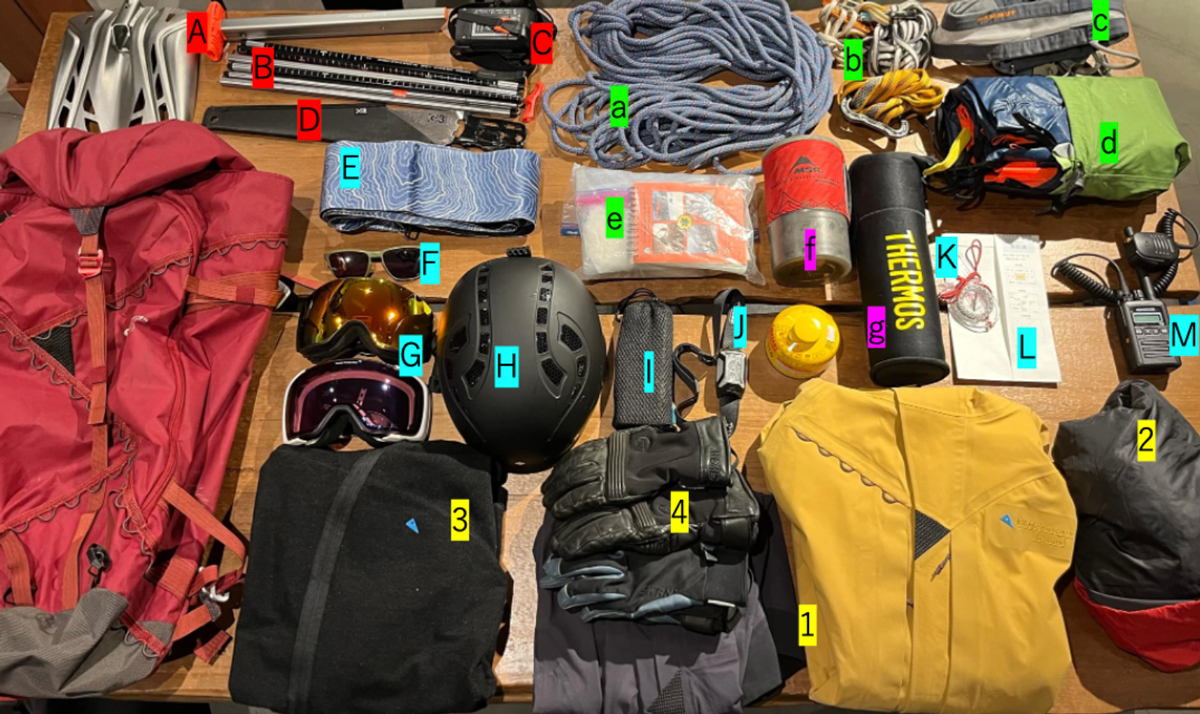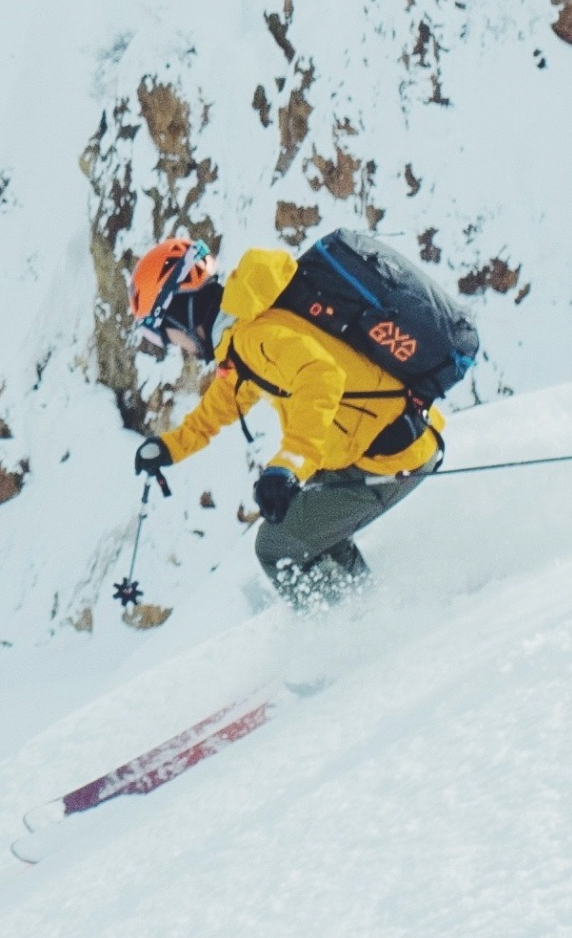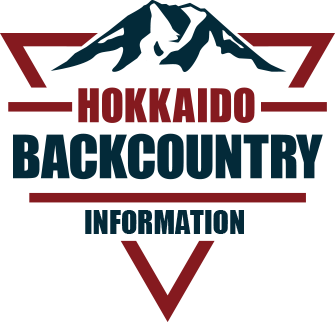Things to do before you enter the Hokkaido backcountry
Gear Up
It is very important to carry the necessary equipment in the Hokkaido backcountry. Adjust your equipment based on the planned route and the weather on the day. It is important to fully understand how to use your equipment, particularly in the harsh environment of the backcountry. Below is a list of equipment required for general backcountry skiing.

Avalanche gear
A) Shovel
B) Probe
C) Avalanche beacon
D) Snow saw
Gear
E) Skins
F) sunglasses
G) goggles
H) helmet
I) mobile battery
J) headlamp
K) compass
L) topographical map
M) radio, spare battery
Rescue equipment
a) rope
b) sling & carabiner
c) harness
d) Emergency rescue sled/tarp
e) first aid
Food & Drink
f) Gas burner & gas cartridges
g) Thermos bottle, snacks, emergency food
Clothing
1) Hard shell top and bottoms
2) Heavy-weight insulating layer
3) Mid-layer
4) Gloves
Of the above equipment, the rescue equipment and gas burner etc, gas burners, etc. should be carried by the party as group equipment. Discuss thoroughly in advance and make sure that you have everything you need. Don’t get caught out once you’re in the backcountry. Be sure to choose appropriate clothing depending on the conditions, such as the temperature and possibility of precipitation.

Get Ready
Make a backcountry plan
Make a backcountry plan that suits your physical strength and skill level. Pay attention to the route distance, elevation difference, difficulty of skiing, risk of falling, etc. Nowadays, there are many books about backcountry skiing routes. For example, in Hokkaido, many routes are listed in “Mountains and Valleys of Hokkaido (1-3)”. Information on the Internet is also very useful and effective. Mountaineering information sites Yamareco and Yamappu may also post information about backcountry skiing with photos and GPS route files. Note, however, that the accuracy of user-generated-content on the Internet cannot be guaranteed. Make use of it wisely. Make sure to check your itinerary on a map before you go to the site. If you are not sure how to make a effectively plan a backcountry trip, we recommend that you first join a guided tour.
Weather and condition forecasts
It’s important to obtain up-to-date weather information before entering the backcountry. Pay attention to wind speed, wind direction, snowfall, and temperature in order to predict conditions on the ground. In areas where avalanche information is announced, such as the Niseko region, be sure to check in advance (for example the Niseko Avalanche Information website or Japan Avalanche Network (JAN) avalanche information) . By knowing the wind direction and strength, you can predict the condition of snowdrifts and slabs on the slopes you plan to ski on. It is also important to check the amount of snowfall and wind strength not only on the day, but also from several days before. Temperature has a variety of effects, but a sudden rise in temperature increases the possibility of avalanches.
Avalanche Information
Currently, there are only two avalanche information sources for recreational and backcountry skiers in Hokkaido, in the Niseko area. The Niseko ski resort area has a Niseko Avalanche Information website, and for the wider Niseko area, which includes Mt. Yotei, Yoichi and Mt. Shiribetsu, there is the international standard Japan Avalanche Network (JAN) avalanche information. Other areas require you to do your own snow stability assessment.
Mountain Search and Rescue Insurance
For short-term visitors to Japan, international mountain accident insurance companies can cover medical, search and rescue and deportation costs relating to a backcountry accident, such as the Austrian Alpine Club (UK).
Backcountry plan registration form (Tozan-Todoke)
In addition to letting people who care about you know where you are going and when you plan to return, we strongly recommend that you submit your backcountry plans to the police through the Tozan-Todoke (mt-compass) registration system. You can also submit mountaineering reports on the police’s website. The police will not automatically search for you; someone needs to call the police to start a search. Registration with the police, however, will speed up rescue efforts. When registering your backcountry plan, skiers are able to register their planned route, two-way radio channels, CocoHeli beacon number (for those with them), etc. This speeds up rescue coordination considerably.
Get in shape
Snow surface conditions can change very quickly in Hokkaido. Breaking trail in Hokkaido’s typical deep powder may take longer than expected. This can lead to physical and mental fatigue. Consume plenty of calories while in the backcountry, get plenty of sleep the night before, and make sure you’re in good physical shape, before you head into the backcountry.


